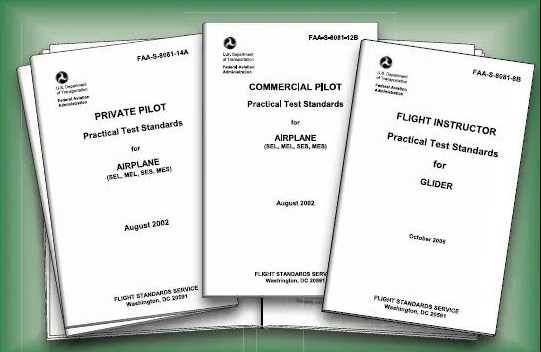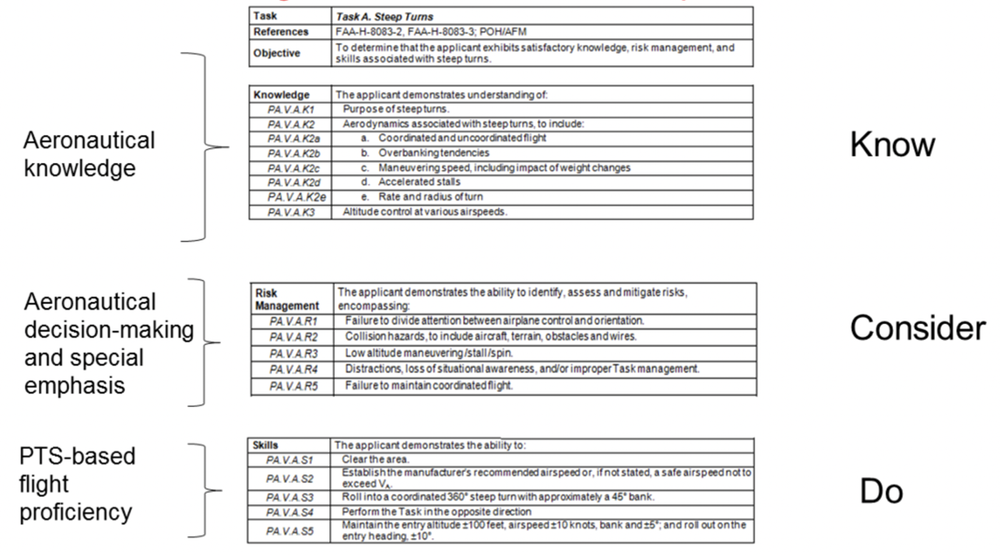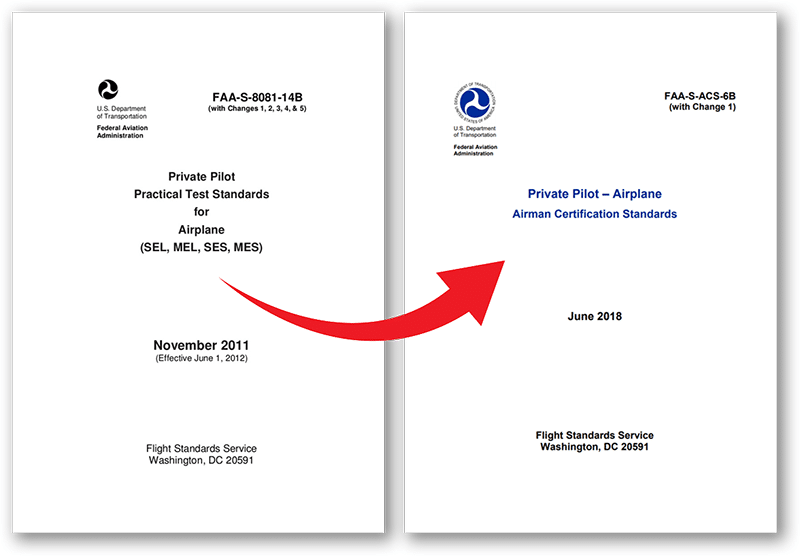What Is the FAA Airmen Certification Standards?
All through school, there is a standard that the first day or two is all about discussing the rubric and what the class is going to be about. Flight school is essentially a trade school, so there is a rubric for flying as well. This document was created by the government instead of the teacher though. It helps with the standardization of certifying pilots and has made aviation the safest form of travel worldwide.
The “rubric” used by the FAA for the certification of pilots is called the Airmen Certification Standards (ACS).
Essentially, the ACS, as it’s more commonly called, is what you need to know from your flight training. It’s also the exact things that you will be tested on by the Designated Pilot Examiner, again using the acronym, more commonly referred to as the DPE.
What Happened to the Practical Test Standards?

Since the FAA took over the certification process of pilots, they have created a document of the standards that were to be met by the student pilot before they were able to fully exercise the privileges of being the pilot in command.
All of aviation is about innovation and increasing safety.
That means every single aspect of aviation is constantly being reevaluated to better the process. This includes the standards that pilots must meet in order to become certificated pilots. It also includes all the processes such as how to perform a power-off stall, the best practices for planning a cross-country flight, and even just doing a walk-around preflight check.
So, this update is exactly what happened with the Practical Test Standards (PTS). It got reevaluated and updated to be the ACS.
As of June 12, 2017, the ACS precedes the PTS when it comes to the requirements of pilot testing.
What’s in the ACS
For this part, we won’t delve into the details of the exact document because the document exists and has everything listed in it. Instead, this article will cover more of how it’s set up and how you can use that to your benefit.

For starters, when you look at the ACS, you will see a table. The table will have 6 different topics. They are:
-
Task – This is the technical term of the actual task you are expected to know and be able to perform
-
References – Here is a list of documents where you can find guidance for the task. There will be references to the task that goes into deeper context and provides deeper knowledge that will help you fully understand the task at hand.
-
Objective – Similar to the task, this outlines the actual goal of the task. The task is the technical name, but the objective is a more in-depth look at what specifically is the desired outcome.
-
Knowledge – When it comes down to brass tax, there is still a knowledge test that must be taken. The knowledge section is describing the actual knowledge you will be tested on. For each certificate, there is a knowledge test. It’s what will be on your written (computer-based nowadays) test when you have to take those.
-
Risk Management – In aviation there are a ton of things that could go wrong. Risk management is all about knowing the most common things that could go wrong and how to mitigate that risk and handle the situation if something does go wrong.
-
Skills – Finally, this is the part that matters the most to pilots who just want to fly. It’s not the most important, it’s just what pilots want to do: Fly. The skills are exactly what pilots want to demonstrate the most. For the sake of the ACS, it’s what you need to know how to do correctly to accomplish the objective.
Keep in mind that the ACS is more of a reference rubric. It doesn’t tell you the actual down-and-dirty details, but it tells you where to find more information and how to perform the skills.
The ACS works amazingly when it comes to planning out your training. It’s the exact document that the DPE will use to test you, so use it to your advantage.
How to Use the ACS
One of the most difficult things to do, especially when you don’t have a background of going to college and using a rubric, is to use the ACS as a basis for study.
That’s exactly how to use it though, as a study guide.
When you’re doing the ground school, it gives exact resources from FAA-written textbooks (which are all free on the FAA website) to give you the answer that is most correct. It explains EXACTLY what you need to do and how to do it.
These may not be the best resources for you personally, but knowing where to get a general understanding is useful for you to find a CFI to explain it to you better. There are also a ton of resources on YouTube that may explain the concept in a way that may make more sense.
Having this as a resource shows you exactly what you need to study in order to ace your checkride. It also can be used for a personal checklist of what you feel confident in doing without any correction.
Essentially the ACS is the ultimate study guide for pilots. It’s applicable to all certificates you will be getting as a pilot, so it’s the best resource to help you on your pilot journey.
FAA Airmen Certification Standards (ACS) Guides
-
Airline Transport Pilot and Type Rating – Airplane (FAA-S-ACS-11 Change 1)
-
Remote Pilot – Small Unmanned Aircraft Systems (FAA-S-ACS-10A)
-
Aviation Mechanic General, Airframe, and Powerplant (FAA-S-ACS-1)
FAA Practical Test Standards (PTS) Guides









